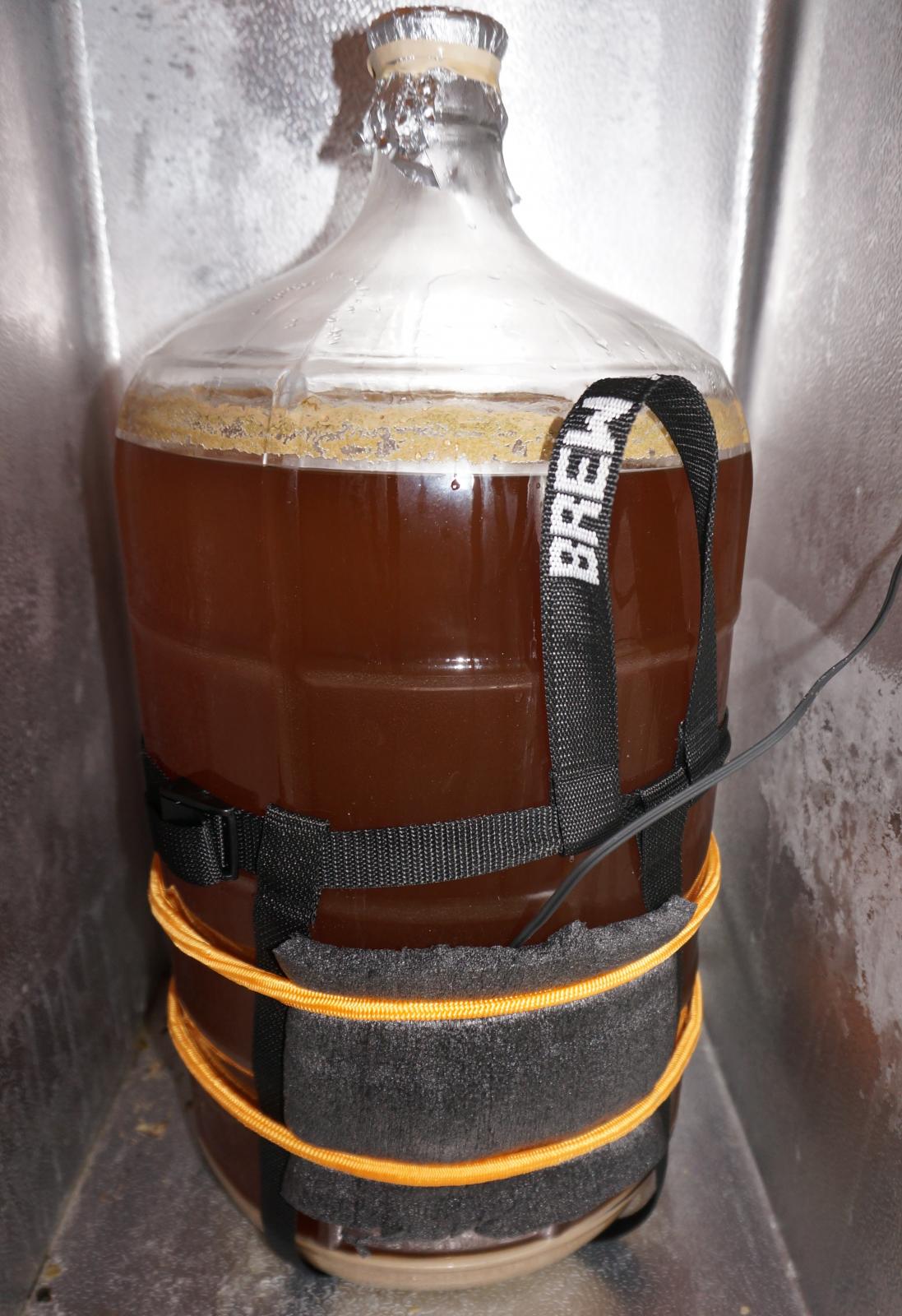So I sent a couple beers off for judging. I wanted to see what the judges were detecting since my last three IPAs have all come out very similar. The judges both found many esters, diacetyl and a slight alcoholic burn to my beer. Here's the recipe and vitals.
100% distilled water used
BIAB mashed at 149* for 60 mins
90 minute boil with a slow rolling boil
2.5 gallon batch size
7.33# 2 Row
.1# Carapils
.1# Crystal 10L
.2# Dextrose
.7 oz Warrior 16.5AA FWH
1 oz Nelson WP at 175 for 1 hr
4 oz Galaxy WP at 175 for 1 hr
1 oz Citra WP at 175 for 1 hr
2 oz Equinox WP at 175 for 1 hr
Ca: 127; Mg: 11; Na: 0; SO4: 277; Cl: 51
Mash pH: 5.4 (all this calculated via Bru'N)
OG: 1.062
FG: 1.008
Bottle carbed to 2.3 volumes/CO2
Transferred when wort was still around 95* to carboy to put in my fridge to cool the rest of the way. Aerated by shaking the carboy then pitched a whole pack of rehydrated US05 on 10/27 at a temp of 75*, a little high I know but per an exBEERiment that shouldn't be a huge issue. Fermented this bad boy at 59* ambient temperature, sticky thermometer read no higher than 62* during all active fermentation. I am not able to get a precise reading on the wort inside the carboy. Raised the ambient temp to 63* on day four and then on day five raised it to 68* to help attenuate properly. Temp was then held at 68* for two days. Bottled beer on 11/6, rushed a little maybe. The beer smelled and tasted fantastic before bottling. I wanted to try an IPA with lots of whirlpool additions and no dry hop and see what would come of it, that's why you see no dry hops for this IPA. Great color.
After bottle conditioning the beer did come out a little darker than I thought and I had been thinking it's due to oxidation, I thought I've been having issues with oxidation but was not marked off on the scoresheet for that.
So my question is, where could all these esters and slight alcohol burn come from with such a low fermentation temp?! I can understand the diacetyl since it fermented so low and I probably didn't leave it on the cake long enough to clean up.
-Couldn't be under pitching, I pitched a whole pack of US05 for a 2.5 gallon batch
-Could the fermentation temp really be getting that high and I don't know it since I have no thermometer in the beer?
Any ideas?
100% distilled water used
BIAB mashed at 149* for 60 mins
90 minute boil with a slow rolling boil
2.5 gallon batch size
7.33# 2 Row
.1# Carapils
.1# Crystal 10L
.2# Dextrose
.7 oz Warrior 16.5AA FWH
1 oz Nelson WP at 175 for 1 hr
4 oz Galaxy WP at 175 for 1 hr
1 oz Citra WP at 175 for 1 hr
2 oz Equinox WP at 175 for 1 hr
Ca: 127; Mg: 11; Na: 0; SO4: 277; Cl: 51
Mash pH: 5.4 (all this calculated via Bru'N)
OG: 1.062
FG: 1.008
Bottle carbed to 2.3 volumes/CO2
Transferred when wort was still around 95* to carboy to put in my fridge to cool the rest of the way. Aerated by shaking the carboy then pitched a whole pack of rehydrated US05 on 10/27 at a temp of 75*, a little high I know but per an exBEERiment that shouldn't be a huge issue. Fermented this bad boy at 59* ambient temperature, sticky thermometer read no higher than 62* during all active fermentation. I am not able to get a precise reading on the wort inside the carboy. Raised the ambient temp to 63* on day four and then on day five raised it to 68* to help attenuate properly. Temp was then held at 68* for two days. Bottled beer on 11/6, rushed a little maybe. The beer smelled and tasted fantastic before bottling. I wanted to try an IPA with lots of whirlpool additions and no dry hop and see what would come of it, that's why you see no dry hops for this IPA. Great color.
After bottle conditioning the beer did come out a little darker than I thought and I had been thinking it's due to oxidation, I thought I've been having issues with oxidation but was not marked off on the scoresheet for that.
So my question is, where could all these esters and slight alcohol burn come from with such a low fermentation temp?! I can understand the diacetyl since it fermented so low and I probably didn't leave it on the cake long enough to clean up.
-Couldn't be under pitching, I pitched a whole pack of US05 for a 2.5 gallon batch
-Could the fermentation temp really be getting that high and I don't know it since I have no thermometer in the beer?
Any ideas?



